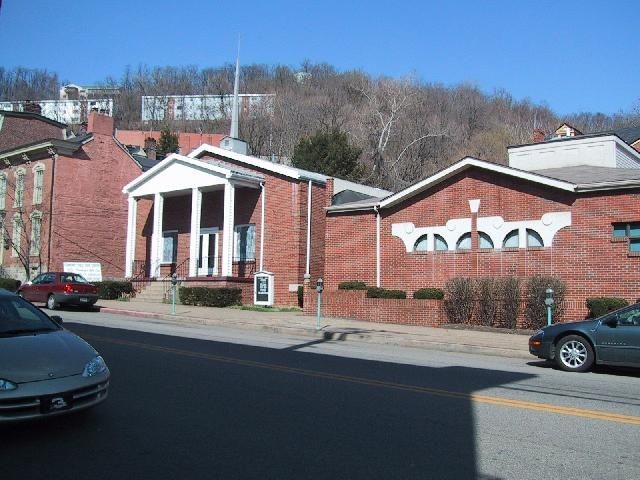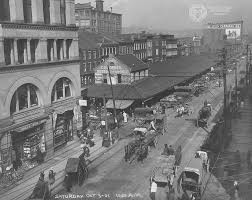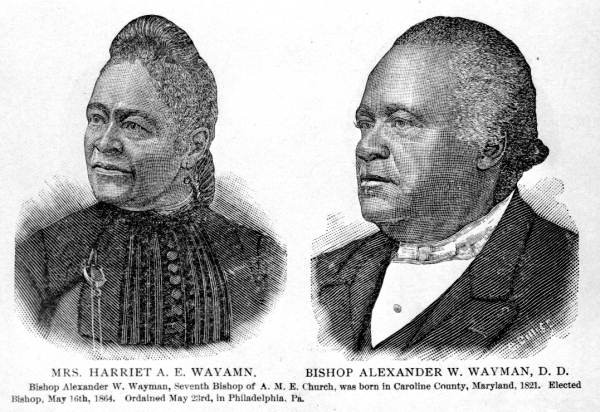Wayman African Methodist Episcopal Church
Introduction
Text-to-speech Audio
Images
Wayman A.M.E. Church

Slave market in Wheeling

Reverend Alexander W. Wayman

Backstory and Context
Text-to-speech Audio
The Wayman A.M.E. Church owes its existence in part to the occurrence of the Civil War and establishment of West Virginia as a state separate from the Confederate South in the mid-nineteenth century. Prior to that time, the Black members of the Wheeling community, as in many southern towns and cities, attended white churches in the area. This was particularly true of enslaved congregants, who typically worshipped in the same churches as their enslavers. With the end of slavery and beginning of the state of West Virginia, however, a growing movement in the region for Black residents to form their own congregations resulted in the establishment not only of a growing number of A.M.E. churches but houses of worship for Black congregants in other denominations as well. Wayman A.M.E. in particular was organized in 1865 under the guidance of the Reverend Dudley Asbury of Ohio and met for services in the First Presbyterian Church. Among the original members were John Hackson, Henry Wylie, Julian Ann Reed, Charity Clark, Mary Wilson, and Polly Young.
Prior to the official organization of Wayman A.M.E. in 1865, many of the congregation’s original members were evidently active in Underground Railroad operations in the area. Though Wheeling was more anti-slavery than many towns in Virginia and the broader American South, the institution was still central to its history and economy. The original settlers in the community that became Wheeling included a family of slaves brought by Ebenezer Zane, who assisted in the defense of the settlement from attacks by Indians and the British during the American War for Independence. A slave market operated on a weekly basis in the town during the antebellum period and because of its location along the Ohio River, Wheeling was a key port in the slave trading network that transported enslaved African Americans from points north to areas along the Mississippi River. This location, in addition to the fact that the National Road (now US 40) ran through Wheeling from Cumberland, Maryland, also made the town an ideal stop for slaves traveling to freedom via the Underground Railroad. Underground Railroad activities in the area were so successful, in fact, that some historians believe it explains the precipitous drop in the enslaved population of what is now the Northern Panhandle of West Virginia between 1850 and 1860. Runaway slaves from across the Northern Panhandle would travel via Wheeling to points in Ohio and Pennsylvania like Marietta, Washington, and West Middletown with the help of A.M.E. congregants like those who eventually formed the Wayman Church in 1865.
The A.M.E. congregants of Wheeling also proved influential in the establishment of West Virginia as a separate conference within the church after the Civil War. For the first several decades of the state’s existence, A.M.E. churches in West Virginia operated as part of the preexisting conferences in the surrounding states. The first calls for a separate conference for the new state originated from Wheeling in 1907 when the Presiding Elder of the Wheeling District the Reverend Dr. West spoke in favor of establishing a conference for West Virginia, an aim that was achieved the following year. It was also in 1907 that Wayman A.M.E. returned to its home on Market Street in Wheeling. Prior to that time, it had moved between several places of worship. After a few services in the First Presbyterian Church where it originally began, the Wayman congregation moved to a jury room in the old courthouse before moving to Wickham’s Auction House and later Market Hall. Finally, a lot was purchased by the Reverend Dudley Asbury at 926 Market Street and a church building later constructed there under the guidance of the Reverend C.T. Prosser. After the church’s dedication in 1882 it was condemned a scant eighteen years later and the congregation returned to Market Hall before then beginning worship services in the Ebenezer Baptist Church under a Reverend Smothers. In 1907, the congregation returned once more to its former lot on Market Street in a new building, which lasted several more decades.
In 1963, however, the Wayman congregation was forced once more to relocate, this time as a result of the construction of the I-70 Wheeling Hill Twin Tunnel Interchange by the West Virginia State Road Commission. The congregation met for some time at the Y.W.C.A. building on Chapline Street before moving to a new location on Eoff Street. The new Wayman A.M.E. Church was built in the Colonial style, the most notable features being a colonnaded front entrance and lighted steeple. The building was a sizable expansion from the congregation’s former home on Market Street, being able to seat 200 worshippers with a loft capable of holding twenty choir members. It is from this structure that the Wayman A.M.E. Church has continued to represent the African Methodist Episcopalian faith in Wheeling, West Virginia as well as the larger history of the region’s Black community.
Sources
Guerci, Mark. "It Took a War: The End of Slavery in West Virginia." MA Thesis: College of William and Mary, 2011.
Switala, William J. Underground Railroad in Delaware, Maryland, and West Virginia. Mechanicsburg, PA: Stackpole Books, 2004.
Thompson, Taylor T. The Legacy of African Methodism in the Third Episcopal District. Nashville, TN: African Methodist Episcopal Church Sunday School Union, 1988.
“Underground Railroad in Operation, 1849.” Ohio County Public Library. Accessed December 31, 2019. https://www.ohiocountylibrary.org/history/2689.
Ohio County Public Library
Ohio County Public Library
Florida Memory
